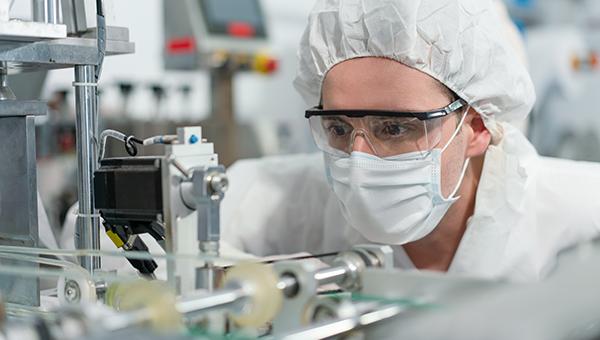Postmarketing Studies of CV Devices Still Lacking in the US
The 21st Century Cures Act hasn’t inspired more companies to conduct ongoing research after FDA approval.

Recent efforts by regulators in the United States to hasten approval for new devices without sacrificing safety have hinged on the notion that postmarketing studies will provide reassurance as the products make it into real-world use. But numbers culled from US Food and Drug Administration databases show that such studies are no more frequent now than before, and often lack rigor.
The 21st Century Cures Act, passed in 2016, states “that the FDA must ‘consider the role of postmarket information in determining the least burdensome means’ for approval,” researchers point out in a JAMA Internal Medicine research letter. Postmarketing studies can help bolster, retroactively, the efficacy data required to get a device to market.
Even before the Cures Act came to be, there were concerns that FDA approval of cardiovascular devices often rests on early evidence.
Senior author Rita F. Redberg, MD (University of California, San Francisco), told TCTMD that going into their new study, she’d felt optimistic that the legislation had spurred change. “There’s certainly been a lot of buzz about the total product life cycle and how postmarket is just going to play a really robust role, so we were hopeful we would see that,” Redberg said.
“Postmarket has always been important, because device trials are really limited premarket in their size and scope, generally. And so we’ve always relied on postmarket [studies] for devices,” she continued. But passage of “the Cures Act—and the idea we can shorten premarket because we’re going to have a robust postmarket, and the whole ‘least burdensome’ ethos—made it really important to see if things had changed since we looked 10 years ago.”
There are some positive trends toward a higher prevalence of devices being studied after FDA approval, she acknowledged. Progress, however, has thus far been slow.
The fact that we keep accepting and using devices based on incomplete data limits our ability to take the best care of our patients. Rita F. Redberg
Redberg, along with co-authors Danelle Hidano, MD (University of Washington, Seattle), and Sanket S. Dhruva, MD (University of California, San Francisco), identified 71 high-risk (class III) cardiovascular devices approved by the FDA between 2015 and 2019. Twenty-seven of these approvals occurred before January 1, 2017, and 44 occurred afterward. They then cross-checked the agency’s Post-Approval Studies (PAS) database for details on postmarketing research.
In all, there were 68 postapproval studies mandated for 49 of the devices. Devices approved subsequent to the Cures Act were statistically no more likely than those that came before to be followed by a postmarketing study (75% vs 59%; P = 0.16).
Most (71%) were unblinded prospective cohort studies, while 18% were randomized clinical trials and 12% involved active surveillance. Just 7% involved blinding, and only the RCTs had active control groups. For 37 studies (55%), primary outcomes included surrogate measures, such as primary patency based on Doppler velocities. The remaining 31 studies (46%) used a clinical outcome, such as claudication.
Around one-third of the studies (38%) were complete by a median follow-up of 4 years, with 44% ongoing and 18% delayed, revised, or terminated. Twenty-five of the 26 completed studies (95%) listed results in the PAS database, as compared with 33% of the ongoing studies.
“To improve the timeliness, quality, and availability of postmarketing evidence, the FDA should consider requiring postmarket randomized clinical trials that use clinical endpoints,” the authors advise. “The FDA should also consider implementing time-limited device approvals, whereby continued marketing would be contingent on timely generation and reporting of clinically meaningful postapproval data.”
One path forward might not rest on the FDA, Redberg suggested. Rather, it might fall to the Centers for Medicare & Medicaid Services (CMS), which could require participation in a clinical trial as a prerequisite not only for reimbursement but also to receive access to the approved treatment. This is currently being considered for the Alzheimer’s drug aducanumab (Aduhelm; Biogen), she pointed out. “You could do the same for a device. . . . You allow people to get it, but you’re still gathering data on [its safety and effectiveness].”
A similar model was tried years back with the Watchman device (Boston Scientific) for left atrial appendage closure, she observed. But in that instance, there was a loophole: patients could still obtain the device outside of a trial setting, it just wouldn’t be paid for by CMS, Redberg explained. “Those postmarket RCTs only work if that’s the only way you could get the device, because otherwise the implanters say, ‘Why should I randomize when I could get paid for putting it in everyone?’”
Redberg urged cardiologists who use medical devices to play an active role in demanding the FDA provide solid data: “If the FDA heard the message that doctors really want more than a small study with a surrogate marker that’s not meaningful to patients and very unclear safety data, I think that could make a difference. The fact that we keep accepting and using devices based on incomplete data limits our ability to take the best care of our patients.”
Caitlin E. Cox is News Editor of TCTMD and Associate Director, Editorial Content at the Cardiovascular Research Foundation. She produces the…
Read Full BioSources
Hidano D, Dhruva SS, Redberg RF. US Food and Drug Administration–mandated postmarketing studies for high-risk cardiovascular devices approved 2015-2019. JAMA Intern Med. 2022;Epub ahead of print.
Disclosures
- Dhruva reports receiving grants from Arnold Ventures during the conduct of the study; and research funding from the National Heart, Lung, and Blood Institute of the National Institutes of Health, the National Evaluation System for health Technology Coordinating Center (NESTcc), the FDA, and the Greenwall Foundation outside the submitted work.
- Redberg reports receiving grants from Arnold Ventures, the Greenwall Foundation, and the National Heart, Lung, and Blood Institute outside the submitted work.





Comments